Our Developments
MedisoLab
SPECT heart reorientation, motion correction / Gantry simulation / Re-architecting
MedisoLab is an innovation laboratory organized in collaboration with the ELTE Faculty of Informatics Competence Center and Mediso Ltd., a Hungarian company specializing in the development and manufacturing of medical technology devices.
Research tasks:
- Software-based reorientation and motion correction of SPECT heart images to enhance the quality of acquired images.
- Implementation of a virtual test environment for the control unit (GANTRY) of medical imaging devices, simulating full device operation.
- Re-architecting evaluation software applications.
Research & Innovation
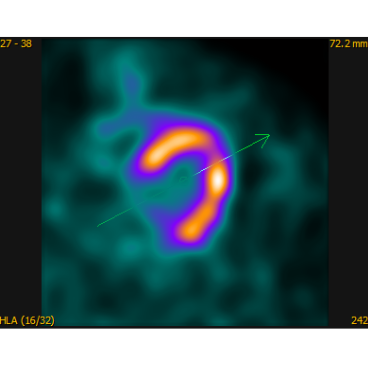
SPECT heart reorientation, motion correction
In the case of SPECT imaging, we have improved the localization and reorientation of the heart's 3D axes using mathematical procedures. We have developed a software-based method for motion correction, which can be applied in cases of longer duration imaging (where patient immobility cannot be guaranteed).
Fig. 1. Reorientation of the heart.
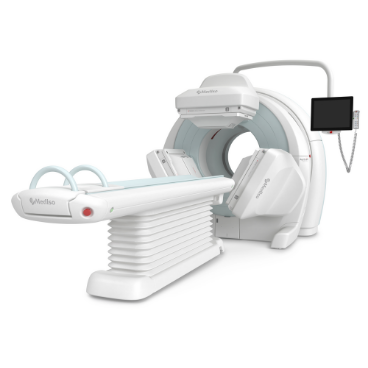
Gantry simulation
Imaging devices are essential in medical diagnostics. Ensuring their safe and proper operation is critical. To verify the correct functioning of such devices, we have created a virtual test environment (which is continuously being developed).
Fig. 2. Three-headed anyscan imaging device.
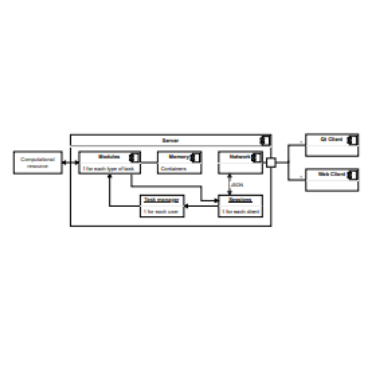
Re-architecting
Based on the current imaging and evaluation application of Mediso, we have developed a prototype of a server-client type application with modularized, multi-level task scheduling and memory management. Fig. 3. Architecture structure
Data&Trust Lab
Designing corporate data analytics architectures / Federated framework / Trusted geolocation
The Data&Trust Lab is an innovation laboratory organized in collaboration between the ELTE Faculty of Informatics Competence Center and E-Group Ltd.
Research tasks:
- Designing enterprise data asset utilization architectures for FinTech, HealthTech, and GovTech sectors.
- Developing federated data analysis methods and architectures.
- Post-quantum encryption solutions for authenticating confidential documents.
- Trusted geolocation (Galileo).
- Trusted (crypto)financial transactions.
Research & Innovation
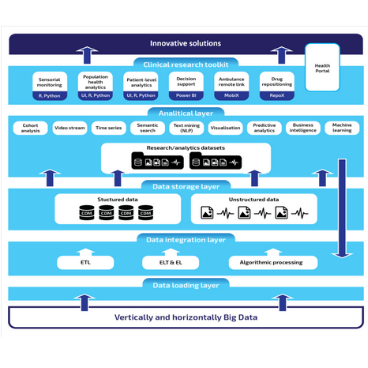
Designing enterprise data analytics architectures
After conducting a survey on data-driven processing and analysis architectures (data warehouse, data lake, data mesh, data hub, hybrid data lake) and analyzing their business application possibilities, experts from ELTE Faculty of Informatics and E-Group have made a recommendation for a DataLake platform. The implementation of the DLx2.0 system is currently underway, complemented by the federated learning framework. Fig. 1. Smart DataLake Platform
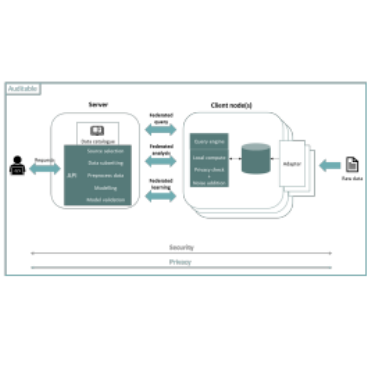
Federated framework
By defining proof-of-concept analytical tools and security protocols, we have designed the system plan for the federated framework. The prototype of the testing system has been developed. Fig. 2. Process model of the federated framework
Trusted geolocation
Our proprietary user authentication solution (IDX) has been extended with location-based identification functionality. The proof-of-concept implementation of EU proposals based on the established GNSS knowledge base includes the ESA secure geofencing demonstration.
Data Science Applications Research Group
Development of software (model) capable of processing large amounts of measurement data from real machine devices
The Data Science Applications Research Group operating at the ELTE Faculty of Informatics campus in Szombathely, in collaboration with an industrial partner, has undertaken the development of software (model) capable of processing large amounts of measurement data primarily related to transmembrane pressure from real machine devices. The software (model) will be designed to function across multiple platforms.
Research & Innovation

Determining operational states
Figure 1. Outline of the data analysis process.
Significant dimensionality reduction was achieved through principal component analysis
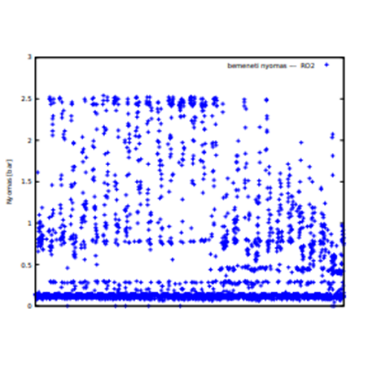
Figure 2. Example of a noisy time series from a water purification device.
Subsequently, using clustering, we determined the operational states of the industrial equipment purely based on the data, following a predefined validation protocol.
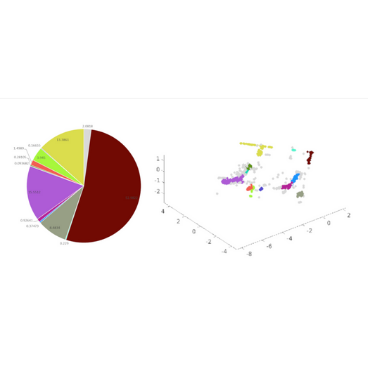
Figure 3. Visualization of a possible clustering in the principal component space.
We have started implementing a general-purpose classical recurrent neural network for predicting failure states, which can handle stacked recurrent networks and residual networks.
